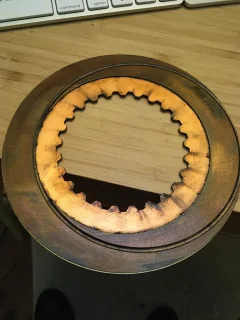Starvingphotog
VIP MEMBER
- Joined
- Jan 1, 2021
- Messages
- 411
Check out this interesting friction plate I found on the 850. Have you seen these before? Very different from the Barnetts. It looks to be brass plate with the friction material one piece and adhered to the brass plate. There's a groove that's off centre on the plate, and it's on all the friction plates in the same orientation. Very cool looking plate compared to the cheap looking Barnetts kit friction plates. I'm wondering if I should reuse these or go with the Barnett kit I bought to renew the clutch.


